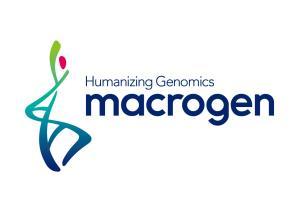
Macrogen said that it presented the result of its Asian genome analysis, which is part of the GenomeAsia 100K Initiative, on the front page on the latest issue of Nature, an internationally renowned scientific journal.
The GenomeAsia 100K Initiative is a non-profit international consortium and has been conducting a mass research project to analyze the genome data of 100,000 Asians since 2016.
Participating organizations included Macrogen and the Seoul National University Bundang Hospital (SNUBH)’s Precision Medicine Center, Nanyang Technological University (NTU), MedGenome, and Genentech.
Professors Seo Jeong-sun at SNUBH and Stephan Schuster of NTU led the research team as joint principal investigators. Seo also serves as the chairman of Macrogen.
The Asian genome analysis covered 219 ethnic groups from 64 countries.
In detail, the research team performed whole-genome sequencing for 1,739 individuals -- 598 from India, 156 from Malaysia, 152 from South Korea, 113 from Pakistan, 100 from Mongolia, 70 from China, 70 from Papua New Guinea, 68 from Indonesia, 52 from the Philippines, 35 from Japan, and 32 from Russia.
The team collected the data as there has been little research into genomic data on Asians, and the lack of published data has made it difficult to personalize the diagnosis and treatment of Asians.
According to the company, the research is significant as it includes the most substantial numbers of Asian regions and races out of all the Asian reference panels compiled worldwide so far.
“This means that researchers will be able to construct and utilize Asian reference panels, instead of traditional European reference panels, in the research for Asian specific illness,” the company said. “Therefore, a great contribution to the development of Asian specific precision medicine will be expected.”
The results of the project are highly significant in that they lay the foundation for diagnostics and therapy tailored not only to Asians but also to races all over the world that have inherited Asian genetic characteristics, the team added.
The study found that the genetic diversity of about 142 ethnic groups living in Asia was far greater than the result of previous studies.
The consortium collected genome data from northern Mongolian tribes to isolated tribes on small islands in Indonesia. It used the data to analyze the origins of different Asian races successfully and to build genome data.
As a result, the study showed that the Asian ethnic groups differed in terms of their response to crucial drugs. For example, while some patients respond well to the anticoagulant Warfarin, a medication usually prescribed to patients suffering from cardiovascular disease, other patients with specific genetic mutations could experience adverse drug reactions such as allergic responses.
Macrogen plans to use the database to develop its own direct-to-consumer genetic testing service. The service will reflect different racial characteristics and supply related data worldwide through Macrogen’s affiliated overseas corporations and branches.
The company also plans to develop a “Global Clinical Genome Supermarket (GCGS)” for medical professionals. The GCGS will provide different diagnostic services specific to each county and race and will include clinical diagnostics and therapies tailored to Asians.
“The more Asian genome data we have, the better we will be able to analyze whether Asians are at a greater risk of certain diseases and whether they are more responsive to certain drugs,” Professor Seo said. “We plan to complete Asian genome big data for 100,000 individuals, spurring research in and outside Korea on disease and drug genes in Asians.”
The team will take the lead in laying the foundations for precision medicine tailored to Asians, Seo added.
Professor Schuster also said, “To put it into context, imagine we looked at all European people and based on the level of their genetic diversity, observed that they could all be grouped into just one ancestral lineage or population.”
The team took that same approach with its new data and has found that there are 10 different ancestral groups or lineages in Asia based on the observations made through this research, Schuster added.

